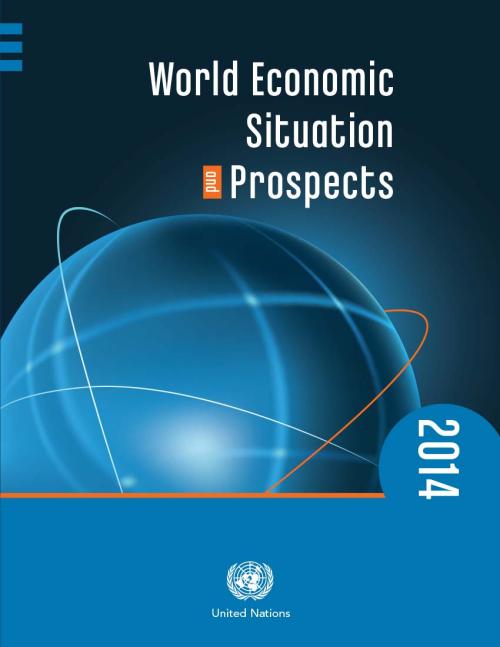The global economy is expected to strengthen over the next two years, despite a downgrade of growth prospects for some developing economies and economies in transition, according to the UN World Economic Situation and Prospects (WESP) 2014 mid-year update. Global growth has been revised slightly lower from the forecasts presented in the WESP 2014. Growth of world gross product (WGP) is now projected at 2.8 per cent in 2014 and 3.2 per cent in 2015, up from 2.2 per cent in 2013. However, this pace of expansion is still low compared to the growth path before the 2008 global financial crisis.
“More than five years after the financial crisis, the world continues to struggle with getting the global economic engine back to running at full capacity,” said Pingfan Hong, Chief of the Global Economic Monitoring Unit for the UN Department of Economic and Social Affairs. “Compared to pre-crisis trends, we have not sufficiently boosted output, trade and employment to their potential levels.”
The report warns that risks and uncertainties for the world economy include: international spill-overs from ongoing adjustment in monetary policies by developed economies; vulnerabilities of emerging economies; remaining fragilities in the euro area; long-term unsustainable public finance for many developed countries; and geopolitical tensions.
Growth for emerging economies revised down
The report’s downward revision in growth projections mainly reflects deteriorating situations in several emerging economies due to different challenging economic and political conditions. With new projected growth rates of 4.7 per cent and 5.1 per cent for 2014 and 2015, respectively, developing countries, as a group, will keep contributing to a large proportion of global growth.
However, this trajectory is two percentage points lower than pre-crisis levels for developing countries. The crisis in Ukraine and associated geopolitical tensions have largely caused an even more pronounced downward revision for economies in transition with negative 1.7 per cent adjustments for the next two years compared to WESP projections in December 2013.
Tepid, though improving, growth in developed economies too weak to restore losses from crisis
The report notes developed countries will continue to recover. Growth in developed economies is projected at 2.0 per cent in 2014 and 2.4 per cent in 2015. For the first time since 2011, the developed economies of North America, Europe and Asia are all aligned towards positive economic growth over the next two years, which should form a positive cycle to reinforce further recovery. However, five years after the financial crisis, projected growth rates remain too weak to recover the output and jobs lost in most of these economies.
Jobs grow at a slow pace and gap with pre-crisis levels widens
Globally, according to the International Labour Organization, employment grew by 1.4 per cent in 2013, a similar pace as in 2012, but stubbornly slower than the rate of 1.7 per cent in pre-crisis years. The global jobs gap—comparing the number of jobs today with the number of jobs that would exist using the pre-crisis trend—widened farther to 62 million in 2013. In the outlook, global employment is expected to continue growing at a slow pace.
“As the number of jobs lost in comparison with the pre-crisis employment trend continues to increase and structural unemployment remains a major problem, policymakers need to implement more supportive macroeconomic policies and active labour market policies,” said Matthias Kempf, the UN’s team leader for the report.
Capital flows returning to some emerging economies
As the United States Federal Reserve gradually scaled back its monthly asset purchases, or quantitative easing, emerging economies saw a marked reduction in capital inflows in 2013 and early 2014 and remained exposed to sudden changes in financial market sentiment. Global financial markets have since calmed and capital flows to emerging economies have stabilized.
In the outlook, capital flows to emerging economies are projected to pick up slowly, in line with the expected recovery in global growth. However, significant uncertainties and downside risks remain, as investors continue to be extremely sensitive to the interaction between the Fed’s tightening path and weaknesses in some emerging markets.
World trade flat in first quarter 2014, but will pick up slowly
World trade growth was flat in the first quarter of 2014. However, some improvement is expected for the remainder of 2014 as import demand in major developed countries gradually increases. Real exports are forecast to grow by 4.1 per cent in 2014, almost twice as fast as in 2013, but still below the precrisis trend of twice the global output growth.
The report calls for strengthening international policy coordination to support a robust recovery of output and jobs, cooperation in international financial reforms and sufficient development financing resources to the least developed countries.
 Welcome to the United Nations
Welcome to the United Nations

